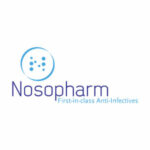
Smaltis supports your nutrition and food industry projects, for both human and animal applications. Call on our team to develop your nutritional solutions using and/or acting on microorganisms, in a context of preserving or improving host health.
Who are you?
What are you looking for?
In the framework of the development and optimization of your nutraceuticals or food/feed products, you are looking for a specialist in microbiology and molecular biology to conduct customized in vitro experiments and support you in the development and enhancement of your products at all stages. You have come to the right place! Smaltis is at your disposal to study your needs and respond optimally with a high-value and personalized approach.
The products you plan to develop
-
Dietary supplements
-
Animal supplementation products
-
Nutritional solutions
-
Medical nutrition products
-
Health foods
-
Functional foods
-
Fermentation products/Fermented foods
-
Food production strains
The approaches you work on
Are you developing nutritional products to maintain the balance of human microbiota? Are you using microorganisms for the production of fermented foods? Are you designing supplementation solutions to improve the metabolism of animals? Whatever approach you are working on, Smaltis and its team are ready to listen and respond effectively to meet your needs with scientific expertise, keen insight, and a customized approach.
Our offer
Antimicrobials
Let's fight infectious diseases together
Microbiota
Let's explore the health potential of microbiota together
Bioproduction
Let's build your bioproduction tools and prepare your microbial products
Genomics
Let's study the genomic and transcriptomic aspects of your projects
Strain collections
Strain collections available for your projects
At what stage are you?
| DEVELOPMENT STAGES |
1
RESEARCH & SELECTION |
2
PROOF OF CONCEPT/EFFICACY |
3
BIOPROCESSES |
4
(PRE)CLINICAL |
| OUR SERVICES |
Candidate screening, |
Analysis of action mechanisms, |
Development and optimization of bioprocesses, |
Support for (pre)clinical studies through in vitro monitoring of samples, |

Why choose Smaltis?
Our responses and studies enable you to supply, enhance, and secure your data within a rigorous scientific framework. Your projects require a precise and thorough study of your needs, with a recommendation of experiments perfectly tailored to them. This is what Smaltis does every day, accompanying its clients with an informed perspective, sharing experiences, and collaboratively designing protocols. You can entrust your project to us with confidence, as our teams are dedicated to its successful execution.
Get in touch! Back to homepage
Back to homepage








